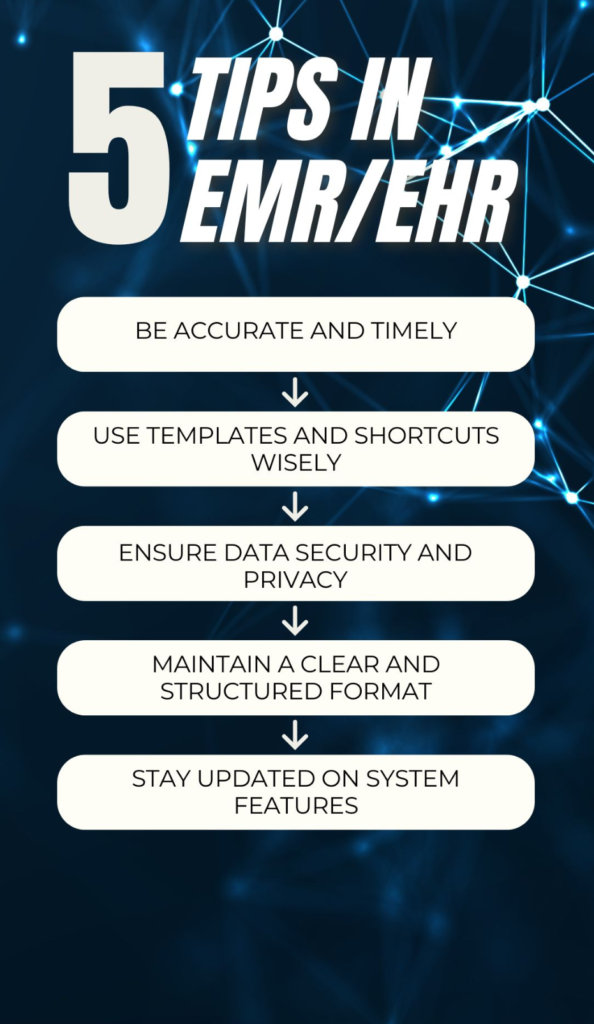Healthcare has made some big strides since the days of paper files, thick ones, at that, to keep patient histories. This new method is now the standard for record-keeping.
Going paperless also streamlines healthcare, reduces mistakes, and helps physicians and nurses provide better care. It is no longer a luxury but rather a necessity to use digital records in this age of technological progress every day.
EHR vs EMR: What is the Difference?
When discussing digital records, the terms Electronic Health Records (EHRs) and Electronic Medical Records (EMRs) are often used. While these two are similar, they serve different needs. EMRs are digital versions of the paper charts that doctors use in a single clinic or hospital. They hold a patient’s medical history, diagnosis, and treatment from one provider.
In contrast, EHRs include more advanced features, such as allowing different healthcare providers to access, edit, and update records in real-time. This ensures that a patient’s medical information stays updated and available, even when visiting different doctors at different hospitals.
To better understand the difference between EHRs and EMRs, it’s important to recognize how EHRs enhance communication between medical professionals, thus promising improved implementation of patient care.
Enhanced Organization and Efficiency
It is cumbersome and hard to keep paper records. Doctors and nurses waste time flipping through physical files, which slows down their work. With digital records, accessing patient information requires only a few clicks.
This expedites the process and frees up more time for healthcare providers to treat patients rather than handle paperwork. Hospitals and clinics also conserve space that would otherwise be taken up by mountains of paper.
Fewer Errors and Better Accuracy
Poor handwriting or missing information on handwritten medical records can cause mistakes. The consequences of misreading a prescription or dosage can be dire for a patient’s health. Digital records remove these risks by making everything open and readable.
Alerts generated by an automated system can also alert doctors to dangerous drug interactions and allergies to medications. The risk of using outdated or incorrect information in treatment is reduced, as records are updated in real-time.
More Rapid Access to Patient History
Time is of the essence in emergencies. With digital records, doctors can quickly access a patient’s medical history and make decisions based on accurate information. They don’t need to wait for file transfers or spend time looking for documents that may not make it on time. Access to these records can be lifesaving in emergencies when doctors must act quickly.
Budget-Friendly Option for Healthcare Facilities
Paper records are costly to maintain. Printing, storage & management of files cost hospitals & clinics. Nor is there the expense of hiring personnel to deal with paperwork. Digitizing records removes these costs.
While the upfront cost of technology can seem steep, the cost savings in the long run justify the investment. Healthcare providers can reinvest these savings into enhancing patient care, purchasing new medical equipment, and recruiting additional manpower.

Enhanced Privacy and Security
Paper records can be lost, stolen, or damaged by fire or water. They also allow unauthorized people to more easily access sensitive medical data. On the other hand, digital records include security protocols like encryption and password protection.
Access to one is limited to authorized personnel, which decreases the prospect of data breaches. Backup systems play an important role in protecting data and preventing valuable information from being compromised if technical issues arise.
Facilitating Communication Between Healthcare Providers
Patients tend to see multiple doctors for various health issues. When records are on paper, key information may get lost as it’s transferred between providers, and the process can be time-consuming.
When both doctors use electronic records that are constantly updated, it eliminates this problem. It enhances coordination and helps make sure that patients receive optimal care without delays.
Environmentally Friendly Medical Solution
Besides being good for healthcare, moving to a paperless world is good for the environment. Every year, hospitals and clinics spend a lot on paper. They can eliminate paper waste, protect trees, and limit the carbon footprint by moving to digital records. This helps create a greener planet and makes healthcare more effective.
More Engaged Patients
Few healthcare institutions do not have patient portals where individuals can now go online to check their medical records. This enables patients to monitor their medical history, medications, and appointment records.
It also prompts them to become involved with their healthcare decisions. When patients have access to their medical records, they can communicate with their doctors more effectively and make more informed choices about their diagnoses and treatments.
TCP/IP as Cloud Access to Healthcare Records
Telehealth is uncomplicated by electronic records. Remote patient monitoring enables patients living in remote areas or unable to visit a doctor in person to get proper treatment.
They can also read patients’ medical history from the online survey and give you the exact diagnosis you ask for without the use of any physical files. This has proved invaluable during the COVID-19 pandemic, as many patients were able to access virtual consultations.
Simplified Record Management for Insurance and Billing
Record-keeping is an important part of medical billing and insurance claims. Paper records can result in lost documents and billing mistakes that slow down claims and payments. Digital records also make the process easier, as key information is automatically stored and eliminates the lack of paperwork.
The impact is two-fold: firms and finance divisions keep the administrative burden off patients’ heads while providing them with an understanding of what’s charged to their insurance provider.
Limiting the Challenges of Going Paperless
But moving to digital records brings challenges as well as benefits. Not all healthcare providers are able to adapt to new-age technology. Furthermore, technical issues, including system failures or cyber threats, are also a risk.
But these challenges can be mitigated with good training and robust security protocols. In the long run, the benefits of digital records far outweigh the disadvantages.
Going Paperless in Healthcare: A Bright Future
The future of healthcare continues to be influenced by technology. From better digital records that improve with artificial intelligence and cloud computing, advances make them even smarter and more efficient.
AI is also likely to play a role in future healthcare systems, predicting health risks, recommending treatments, and enhancing patient outcomes. The more hospitals and clinics convert to paperless records, the safer, faster, and more accessible healthcare will be for everyone.
Conclusion
Modern healthcare relies on paperless records. They increase efficiency, decrease mistakes, lower costs, and improve patient orders. Adopting digital records may have challenges, but the benefits make it a step that has to be taken for the future. As such, going paperless will also be increasingly vital to delivering the highest standards of care to everyone.
FAQs
- Are paperless records more secure than paper records?
Sure, digital records have security features such as encryption and password protection that paper records do not have, so they may be safer.
- Does every hospital have paperless records?
Many hospitals have moved to digital records, but some continue to use paper for financial or technical reasons.
- Are patients able to read their electronic medical records?
Yes, numerous health centers have online portals for patients to access their medical history and lab results.




